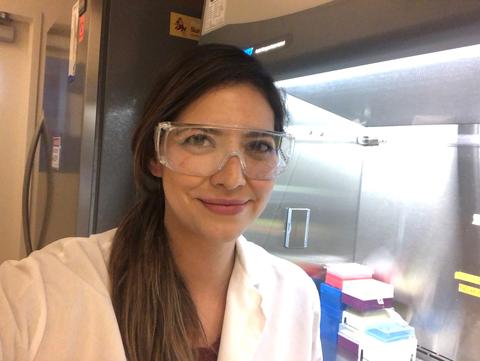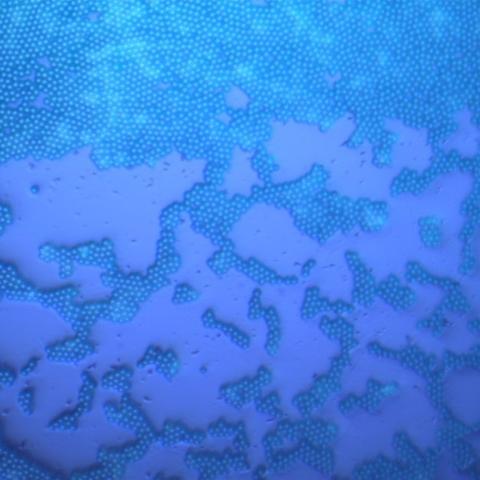
Gut reactions — NIST postdoctoral researcher Ana Barrios is preparing a cell-based model of the human gut for future animal-free experiments with nanoplastics.
The human digestive system is a highly complex workhorse for overall wellness, containing many different types of cells tightly packed together for communication in close quarters. The incredibly small inner workings of this human-body hodgepodge aren’t easy to replicate in a laboratory setting, but we need that ability to better understand how cells and other materials interact.
One category of these “other materials” is nanoplastics, particles that are hard to see and even harder to measure. Our modern world exposes us to nanoplastics constantly, and we ingest them in our air and food without realizing it. Where do they end up? In our gut.
To study the interactions between gut cells and nanoplastics, Ana has a two-stage process ahead of her:

1) Create a complex system of different cells that mimics the human gut. These cells will form tight junctions of communication, which Ana wants to measure and compare as the model system forms over a 21-day period.
2) Introduce polystyrene nanospheres to the system. Ana plans to use fluorescent nanoparticles and track them as they move from one cell to another. From there, she can analyze whether the particles cause stress in the biological system or even kill the cells.
These studies can aid in the development of non-animal tissue models that provide insight on the biological effects of nanoplastics and inform environmental risk considerations. Right now, Ana is just at the start of stage 1, preparing a line of identical cells that will serve as a baseline for her future work. Quite the journey lies ahead, but we’re sure that she will follow her gut along the way.
Follow us on social media for more like this from all across NIST!

